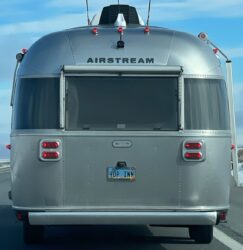Embarking on a journey in a recreational vehicle [RV] is an exhilarating experience, filled with the promise of adventure and discovery. While you may have meticulously planned your route and prepared your vehicle for the road, one crucial aspect that should never be overlooked is tire care and maintenance. The condition of your RV’s tires plays a pivotal role in ensuring a safe and smooth journey. In this guide, we will delve into the essential practices and tips for maintaining and caring for your RV tires.
- Regular Inspections: The foundation of proper tire care lies in regular inspections. Before every trip, take the time to visually inspect each tire for signs of wear, bulges, or cuts. Check the tire pressure using a reliable gauge and ensure it matches the manufacturer’s recommendations. Underinflated or overinflated tires can compromise safety and fuel efficiency. Use a depth gauge to check how much tread is on each of your tires according to the instructions that came with the tool. Having to little tread can impact handling in many driving conditions. Unevenly wearing tread could mean that there is an alignment problem.
- Proper Inflation: Maintaining the correct tire pressure is critical for the overall performance of your RV. Underinflated tires can lead to increased rolling resistance, reduced fuel efficiency, and uneven wear. On the other hand, overinflated tires may result in a harsh ride and increased susceptibility to road hazards. Refer to your RV’s manual or the tire manufacturer’s recommendations for the optimal tire pressure.
- Rotation Schedule: Tires on an RV do not wear uniformly due to variations in weight distribution. Implementing a regular tire rotation schedule helps ensure even wear and extends the lifespan of your tires. Follow the rotation pattern outlined in your RV’s manual, typically involving rotating the tires from front to back and vice versa.
- Alignment Checks: Misaligned wheels can lead to uneven tire wear and compromise handling. Schedule regular alignment checks to ensure that your RV’s wheels are properly aligned. If you notice uneven wear patterns on the tires, it’s a sign that an alignment adjustment may be necessary.
- Weight Distribution: RVs come in various sizes and designs, and proper weight distribution is crucial for tire health. Overloading specific tires can lead to excessive strain, resulting in premature wear. Distribute the weight evenly and avoid exceeding the manufacturer’s weight recommendations for your RV.
- Sidewall Inspection: Pay close attention to the sidewalls of your RV tires. Look for any cracks, bulges, or signs of damage. The sidewalls provide essential structural support, and any compromise in their integrity can lead to tire failure. If you notice abnormalities, consult with a professional to assess the extent of the damage.
- Temperature Considerations: Tire performance is influenced by temperature. Extreme heat can cause tires to overheat, leading to blowouts. In hot weather, monitor tire pressure more frequently and consider reducing your speed to minimize heat buildup. Similarly, in cold weather, ensure that tires are properly inflated as cold temperatures can result in pressure loss.
- Speed Considerations: As a tire rolls, it flexes and experiences deformation. At higher speeds, the frequency and intensity of these deformations increase. The repeated flexing generates heat within the tire. Excessive heat can accelerate the aging process of the tire compound, making it more susceptible to wear and reducing its overall lifespan. The higher the speed, the greater the friction between the tire and the road surface. Increased friction results in more abrasion, causing the tread of the tire to wear down more quickly. This is particularly true for soft or high-performance tire compounds designed for enhanced traction, as they are generally more prone to wear. As the tire’s temperature increases the pressure will also increase. This is normal.
- Storage Practices: When your RV is not in use, proper storage practices can significantly impact tire longevity. Store your RV in a cool, dry place away from direct sunlight. If possible, lift the RV off the ground using jacks to relieve pressure on the tires. Covering the tires with UV-resistant tire covers can protect them from the damaging effects of the sun.
Conclusion: Prioritizing tire care and maintenance is not only a matter of safety but also a means to enhance the overall performance and longevity of your RV. By incorporating these practices into your routine, you ensure that your RV tires are ready to take on the open road, providing you with a worry-free and enjoyable travel experience. Remember, a well-maintained set of tires is your ticket to smooth travels and countless unforgettable adventures.

